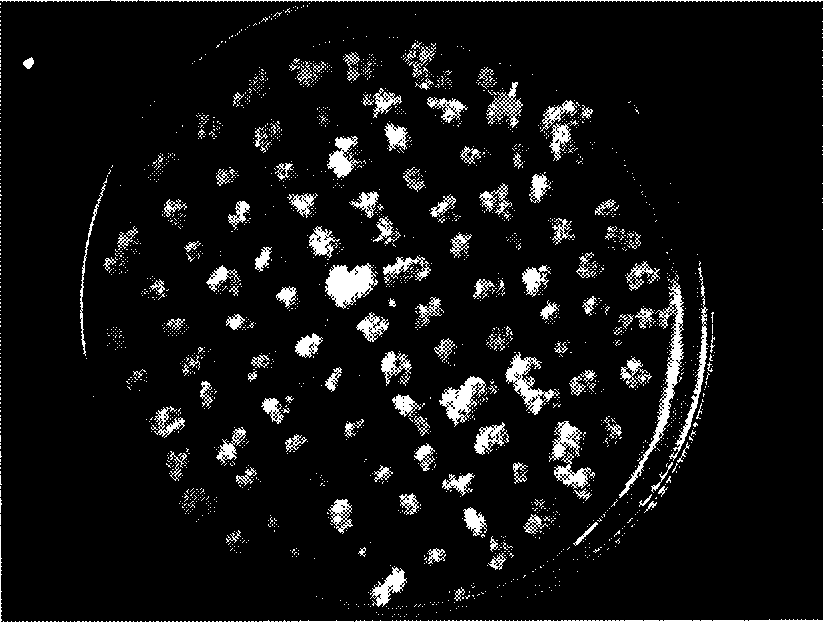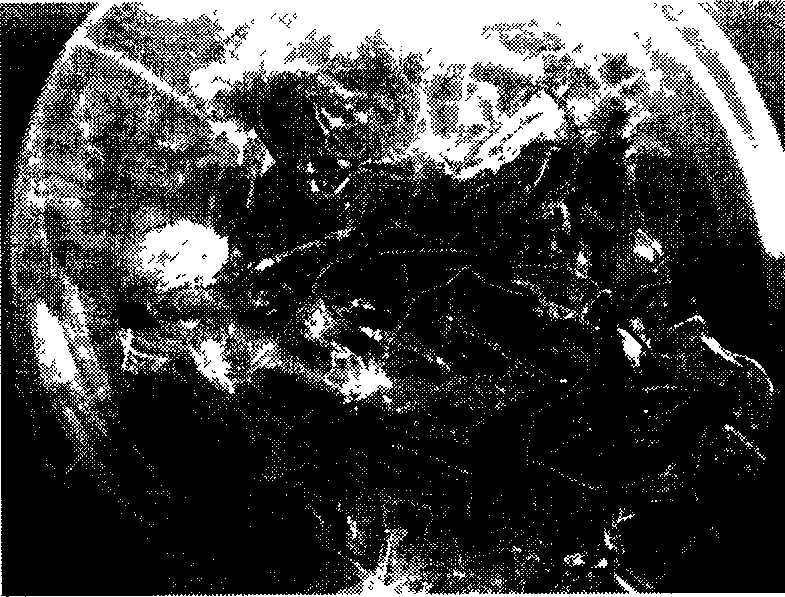Method for establishing high frequency regenerating system of perennial ryegrass
A technology of high-frequency regeneration and ryegrass, which is applied in plant regeneration, horticultural methods, botanical equipment and methods, etc., can solve the problems of poor ability to regenerate plants, difficult cultivation, slow progress of perennial ryegrass, and achieve the goal of obtaining materials Convenience and the effect of increasing the induction rate
- Summary
- Abstract
- Description
- Claims
- Application Information
AI Technical Summary
Problems solved by technology
Method used
Image
Examples
Embodiment 1
[0022] Utilize the present invention to obtain the high-frequency regeneration system of perennial ryegrass Aishote and Super Derby
[0023] Plant Material: Mature seeds of perennial ryegrass Eroste and Super Derby.
[0024] Pretreatment before inoculation: immerse an appropriate amount of seeds in a sodium hypochlorite stock solution (7% active chlorine) with a drop of Tween-20, stir and disinfect for 40 minutes, and wash with sterile water more than 6 times. Soak at low temperature at 4°C for 12 hours, wash again with sterile water, and then inoculate some seeds directly on the callus induction medium; some of the seeds were inoculated on the same medium by stripping the embryos with tweezers; the rest were directly inoculated on the MS basic medium. When it grows for 3 days, its hypocotyl and radicle (both about 5 mm in length) are inoculated on the callus induction medium. The results are shown in Table 1. It can be seen that the callus rate and embryogenic callus rate o...
Embodiment 2
[0044] Transforming DREB1A gene into perennial ryegrass to obtain transgenic plants by particle gun method
[0045] Perennial ryegrass Juventus embryogenic callus and a suitable medium for callus induction and differentiation were obtained according to the method in Example 1. After 2-3 passages, the embryogenic callus was picked and pre-cultured for 3 days before being bombarded. The DREB1A gene was coated on the gold powder microprojectiles, and the microprojectiles were uniformly coated on the carrier film by using the PDS-1000 / He gene gun of Biorad Company of the United States. The flying distance of the microprojectiles was 6cm, and each dish was bombarded twice.
[0046] After bombardment overnight on medium containing osmotica. The next day, the transient expression of the gene was observed by gusA histochemical staining, and the callus was transferred to the induction medium for 10 days in the dark, so that the transferred gene could be fully expressed. Then it is tr...
PUM
 Login to View More
Login to View More Abstract
Description
Claims
Application Information
 Login to View More
Login to View More - R&D
- Intellectual Property
- Life Sciences
- Materials
- Tech Scout
- Unparalleled Data Quality
- Higher Quality Content
- 60% Fewer Hallucinations
Browse by: Latest US Patents, China's latest patents, Technical Efficacy Thesaurus, Application Domain, Technology Topic, Popular Technical Reports.
© 2025 PatSnap. All rights reserved.Legal|Privacy policy|Modern Slavery Act Transparency Statement|Sitemap|About US| Contact US: help@patsnap.com



